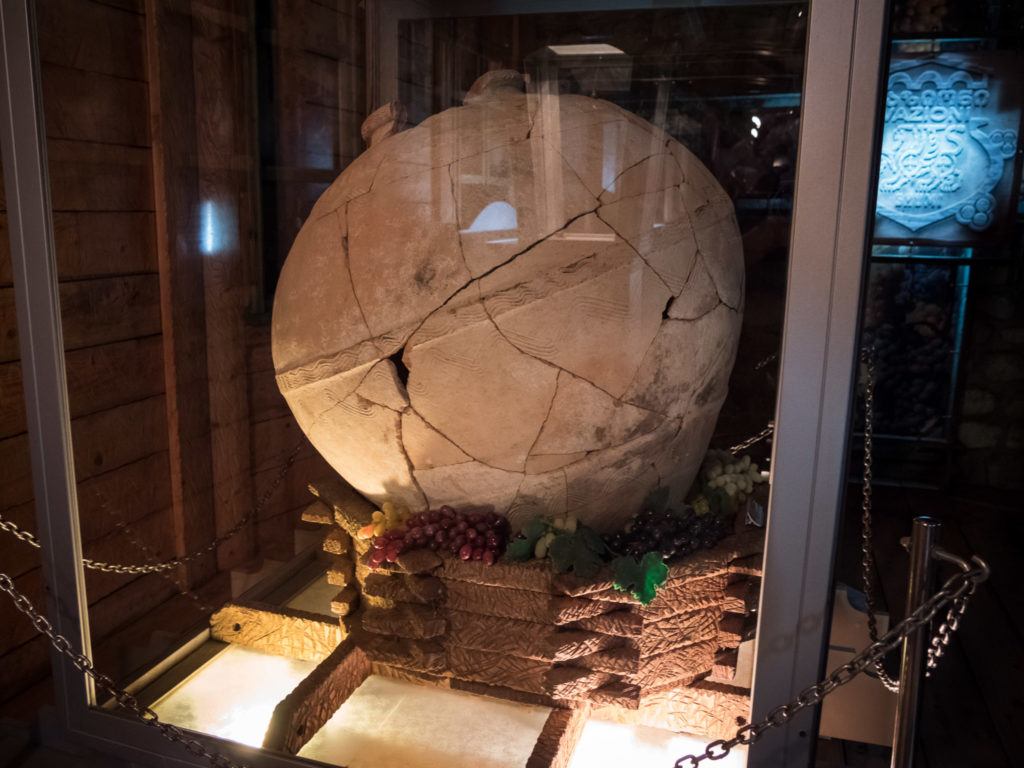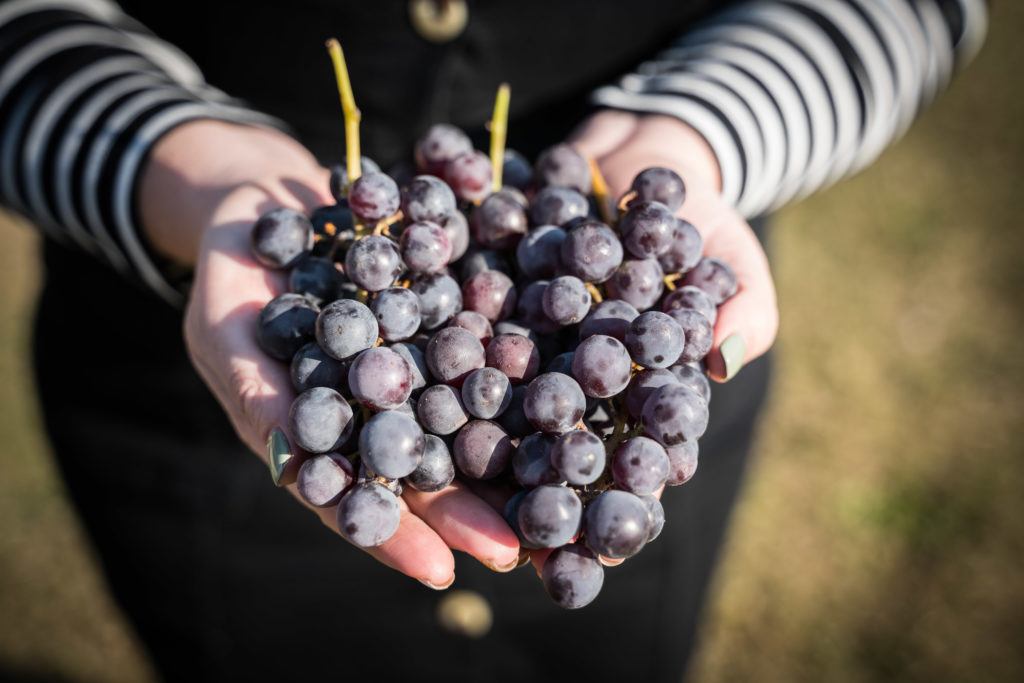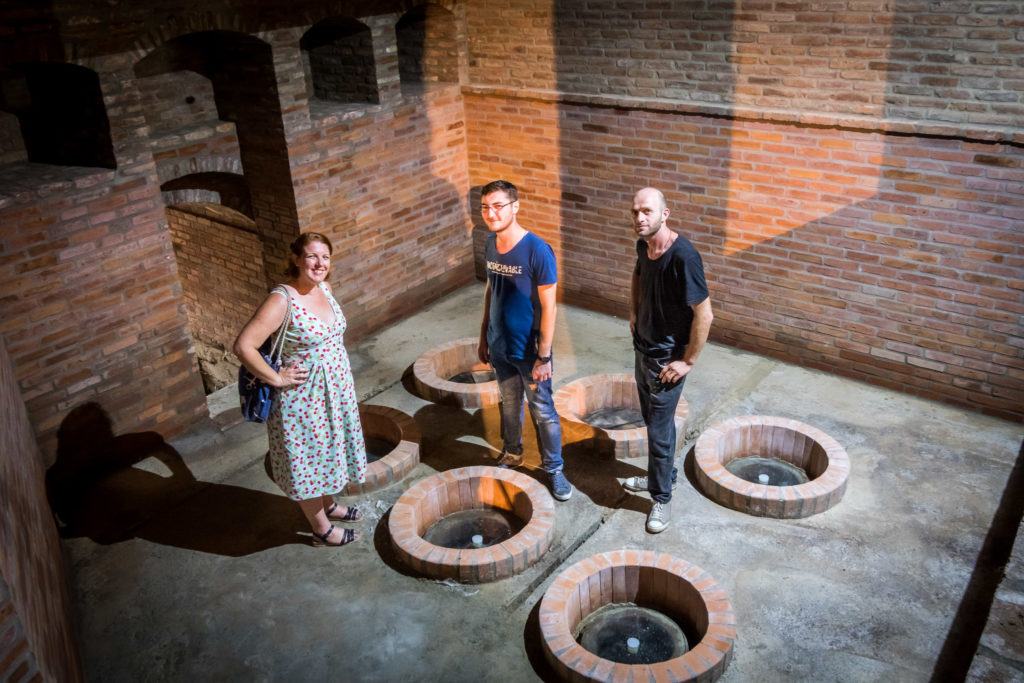Thanks for registering!
Your Georgian Wine Crash Course is below. Though, if you take a wine tour with us or one of our expert guides, you’ll get the opportunity to learn this direct from the experts – plus a lot more.
Within the next minute or 2 you should also receive to your inbox your downloadable Georgian wine tasting card & guide (or you can download below) .
This card summarizes the most typical aromas/flavors you’ll discover in Georgian wines, and a printable tasting notes template to help you record info quickly and easily about any wines you taste – the template can be used for any type of wine, not just Georgian wine :-)
——–
——-
Georgian Wine Mini-Guide
Your essential introduction to the fundamentals of Georgian style natural wine, history and the necessary terms associated with Georgian wine so that you will know roughly what is going on when you come and drink wine in Georgia.
Learn The basics in less than 10 minutes!
Georgia has a winemaking tradition stretching back to 6,000 BC, making it the oldest known winemaking country known on Earth.
Essential Wine Terms
Even the basic terminology varies from standard, modern winemaking. Plus, there are some important local words you should understand to make it much easier to visit here.
Classical European Wine vs Traditional Georgian Wine
Classical European wine is where grapes are separated from stalks and pressed to make juice. The juice is then fermented in steel tanks. For white wine, the skins are removed. For Rose, red grapes are used with the skin removed. For red wine, red grapes with the skins left in the mix for a variable period during fermentation.
Traditional Georgian wine is made in a 100% natural way, as it would have been 8000 years ago. Grapes, stalks and skins are thrown in together, into a large clay pot, that is buried underground, to control temperature. The sediment naturally sinks to the bottom of the pot. This sediment (the must) is then removed after a variable amount of time, and the wine can then rest in the clay pot to age for 3 months, to 4+ years.
Amber/Orange Wine & Skin Contact
Skin contact refers to the amount of time grape skins are left in with the wine during the initial fermentation and aging. White grape wines made with skin contact actually turn an amber to orange color, and take on a tannic quality, similar to classic European red wines.
So, Georgian traditional white wine, has a quality all of it’s own that even those who normally only drink red, may be surprised by.
Natural / Bio / Organic Wine
Qvevri (Amphorae)
The traditional clay pot in which the Georgian natural wine is made. These are typically from 50 to 2000 liters in size. In most regions they are buried underground, with only the top opening exposed.
Chacha
The must, which is the sediment from the skins and stalks etc. that falls to the bottom of the qvevri during the production process, is called chacha. This must is used to make a grappa like spirit of the same name, called chacha. It’s lethal stuff, and a right of passage for any new visitor to Georgia to drink.
Satsnakheli
Marani
Marani is the Georgian word for Wine Cellar.
Supra & Tamada
The Supra is a traditional Georgian feast to celebrate special events. The Tamada, is the toastmaster, the MC of the event. At a Supra, the Tamada will tell stories and quote history and poetry to help explain each toast they make. Each toast has a specific message such as peace, love, honor to the family, victory to Georgia, thanks to guests, or even something as obscure as a toast to why one’s recently married child should hurry up and have children.
Each toast is accompanied by wine. Served in a very small glass (75ml) as you (men, at least) are traditionally supposed to finish the whole glass after each individual toast.
The supra can last for many hours, and plates of food are often piled one on top of the other as the meal continues. Due to the amount of toasts made throughout the supra, it’s said that the average Georgian man will drink 3 to 9 liters of white wine during a supra. Having attended a few, I can confirm this to be true on many occasions…
The supra and the toasts play an important cultural role in Georgia, for most tourists it’s almost impossible to get invited to one unless you already have friends here. However, if you’d like to be part of this cultural experience, email us [email protected] as we are able to organize for guests to attend a traditional supra.
Kantsi
From the 4th century AD at least, Georgians began to drink wine from the Kantsi. The kantsi is a drinking horn, from an animal. It varies in size from about 0.5 litres to 3 or more litres. It was customary to fill the horn and for men to drink the whole thing in one. Today, horns are still found in homes and bars, though they are not used regularly.
Georgia Wine History
8000 years of history. On a small piece of land, 20 miles south of Tbilisi, lies the archeological dig site of Gadachrili Gora. Here they discovered pieces of pottery, stained with wine, which have been carbon dated to around 6,000 BC.
This evidence shows that people living off the land in that area 8000 years ago, must have been making wine and storing it in clay pots. Grapes, slightly crushed into pots and left to ferment, naturally turn into wine without the need of anything else added, due to natural yeasts and sugars on/in the grapes.
This traditional winemaking method spread around Europe. It remained the only method for making wine in Georgia until the 19th century.
From the 19th century, the first European classical wines were being made in Georgia. It’s believed that Prince Alexander Chavchavadze (1786-1846), who lived in the Tsinandali estate in east Georgia, was the first to make wine and bottle it in this way.
The oldest bottle, still on display at the estate, dates from 1841, though wines were likely being made like this earlier than that.
After world war II, the Soviet Union turned winemaking in Georgia into an industrial machine. Quantity over quality was the goal. The highest yielding grape varieties were planted in huge numbers. Planting of lesser yielding grapes was banned. Many rare grape varietals were lost during this time.
In the 21st century, as Georgia has recovered from Soviet rule, winemakers have started to focus more on quality and rare grapes, as well as more experimentation when making bio wines.
Georgia’s ancient traditions of making natural wines comes at a time when more and more people worldwide are looking for healthier, more natural products. Today you’ll find micro producers, making just a few thousand bottles a year, using the 8000 year old methods. As well as medium and large size enterprise making a mix of natural wines and European classical wines, with Georgian grape varieties.
Georgian Grapes
Estimates on the number of grapes worldwide range from about 7,000 to 10,200. And this number may be growing due to hybridization.
Of this total, Georgia has more than 500 endemic grape varietals. Only about 40 of these are used in commercial production, although there are some small wineries experimenting with lesser known grapes to make unique wines.
Of the top 40, there are a few that are dominating the market.
Important White Grapes
Rkatsiteli – The most produced grape. A strong and versatile grape that is used in many types of wines from dry table wine to sparkling and sweet wine. From the qvevri, you’ll find a lot of bold, dry wines with apple notes and sometimes a little hay. But, the versatility of this grape leads to many different profiles.
Mtsvane – The name means “green” in Georgian, referring to the grapes color. Normally producing wines with a less intense flavor than Rkatsiteli. The two are often blended.
Chinuri (Chinebuli) – One of the most popular white grapes from central Georgia (kartli region).
Tsolikouri – Hailing from western Georgia, and normally regarded as making higher acidity wines. It’s often blended with other west Georgian grapes, like Tsitska.
Important Red Grapes
Saperavi – The powerhouse of Georgian red wine. Growing mostly in east georgia. It produces wines so dark, Georgians often call it “black wine”. This grapes’ versatility also knows no bounds. Saperavi grapes are used to produce many types of wines of differing names (see “microzones” below)
Tavkveri – A typically lighter red wine, produced mainly in central Georgia.
Alexandrouli, Otskhanuri Sapere, Ojaleshi – Three grapes grown mainly in west georgia, all with differing characters.
Georgian Wine Regions
Wine is made across most of the country of Georgia. It’s typical for most families in the countryside to make enough wine for their own home supply, or maybe to sell just a little, or send the wine to their families in the cities to sell.
When it comes to producers who want to sell the highest quality wines, and produce above regular home use scale, there are 3 regions that are producing most of the best wines.
1. Kakheti / Alazani Valley
By far the largest wine producing region. Epicentres of this region include Telavi, Kvareli and Signagi, and wine production flows all the way up the Alazani valley, as well as to the south in the next valley.
Kakheti starts about 1.5 hours drive to the east of Tbilisi. And it’s a little over 2 hours to reach the heart of the Alazani valley
In this region you’ll find the best red wines in Georgia – especially focused on the Saperavi grape. Our 1 & 2 day itineraries for Kakheti are in your inbox now.
2. Kartli
Kartli includes the areas north and south of Tbilisi, and to the north east towards Gori (where Josef Stalin was born).
White wines and lighter reds (like Tavkveri) are typical from this area. But, manufacturers in the region sometimes bring grapes from east Georgia to make wines, as well as using local grapes. So there are opportunities to try quite a variety of wines in Kartli.
To the south of Tbilisi, less scenery, but also some good wineries, and the ancient archeological site proving the existence of 8,000 year old wine production.
3. Imereti
Imereti is also an important wine producing region, with a focus mainly on white wines. If you are entering Georgia through Kutaisi airport, and don’t intend to visit Tbilisi or Kakheti, then an Imereti wine tour could be your best choice to easily explore Georgian wine.
Microzones (Appellations / PDOs)
Georgia, at time of writing, has 29 designated appellations of origin – often called “microzones” in Georgia. Specific regions which represent unique micro-climates, leading to unique characters in the grapes grown their and the wines made from them.
20 of these 29 appellations are in the Kakheti region.
Specific grape varietals from these appellations can be used in designated ways to make wines that are named after the appellations. Although the grapes must be grown within the appellation, production of the wine can be done elsewhere. So you will find some wineries, based elsewhere, selling wines with the name of the appellations.
Some examples:
Tsinandali – Made from a blend of Rkatsiteli and up to 15% Mtsvane grapes grown in the Tsinandali PDO. Tsinandali can only be made using classical European style production method.
Mukuzani – Must be made from Saperavi grapes grown in Mukuzani PDO. Previously these wines had to be aged in oak barrels to qualify, sadly that requirement has been removed. Still, many Mukuzani wines continue to be oaked, following the previous concept, so read the label to be sure!
—
Visiting Wineries In Georgia
Taking a wine trip in Georgia is quite a different experience to those English, EU, American and Australian guests may expect. The only places that offer something close to a typical wine tasting you may have in somewhere like California, are the very large commercial vineyards.
At these large wineries, you may pay a few dollars, and have a young member of staff give you a quick tour (as part of a large group) and then a small tasting of maybe 3 wines (25ml / 1oz). It’s a bit of a herding process.
For most medium and small wineries – which are the ones where you might actually meet the winemaker, sit down in the family wine cellar and have the option to try proper bio wines… Those experiences typically work very differently.
For small and medium size wineries (which is most of the ones in Georgia – the best ones to visit, anyway):
- Family wineries rarely take walk in’s, though some may, but you might be delayed. You should book at least 1 day in advance. And then call to confirm your booking if you are running late.
- English visit not always available. Booking in advance also allows them to make sure they have someone who speaks English available. But this is not always guaranteed. Real off beaten track wineries often need a guide.
- Most offer large servings for each tasting (75ml – 150ml per wine) and you often get bonus shots of chacha (Georgian grappa) and wine. This is why they charge for a tasting. This is typical across Georgia, though not 100% of the time. This is why it’s almost impossible to self-drive, unless you choose not to do wine tastings as the driver.
- And, they might keep refilling the glass… Once the tasting is done, many places will offer you to have a little more of your favourite tipple. On a slow day, they may invite you to finish off the bottle. Hospitality in small wineries is typically excellent, and keeping to a schedule without a guide to keep track of time, can lead to overstaying at every stop and missing appointments.
- Most small vineyards open from 11am to 6pm/7pm. Medium size ones that have an a la carte restaurant may open until 10pm or a bit later.
Discover Georgian Wine With Us
Come and discover 8000 years of wine history, as well as learn to cook Georgian traditional food (optional), and taste home cooked or professional dishes from some of our favourite wine country spots.
To space out the alcohol, and work off that tasty food, we’ll be stopping in at some great scenic/historical spots too.
Take one of our meticulously planned out artisan wine tours, which focus on premium authentic travel with surprising wines, meet the winemaker experiences, supra (feast) polyphonic singing and more. Or, travel self-guided with one of our professional drivers/guides.
—
Don’t drink and drive – Come join us on a wine adventure where we’ll drive you! Premium-authentic, all-inclusive, overly indulgent food & wine tours.
Or Join one of our Tbilisi wine tasting events.
Download our free Georgian wine tasting card / mini-guide below.







